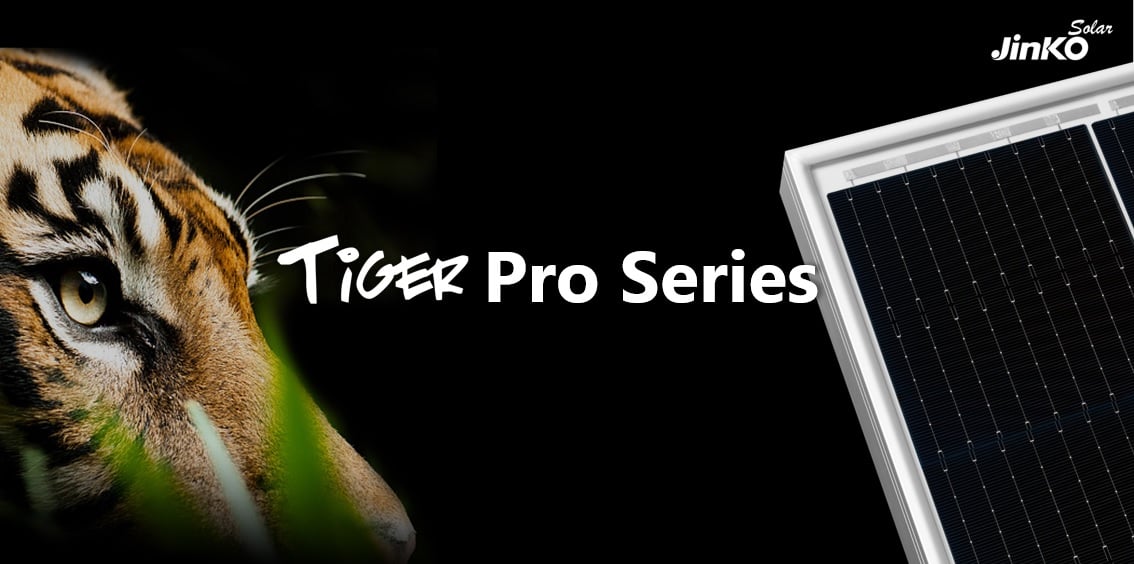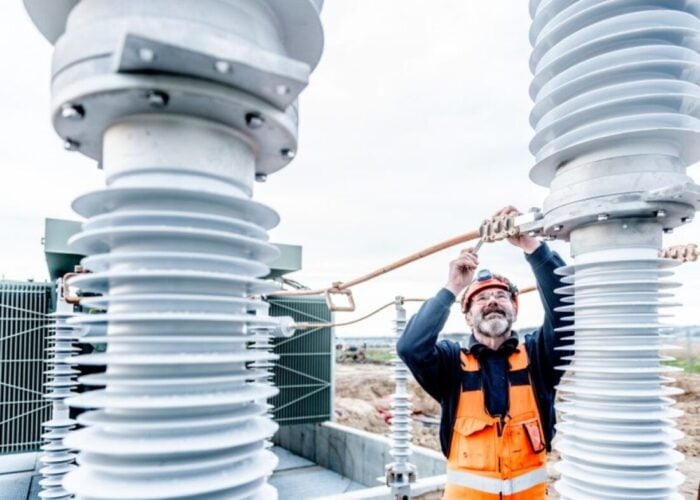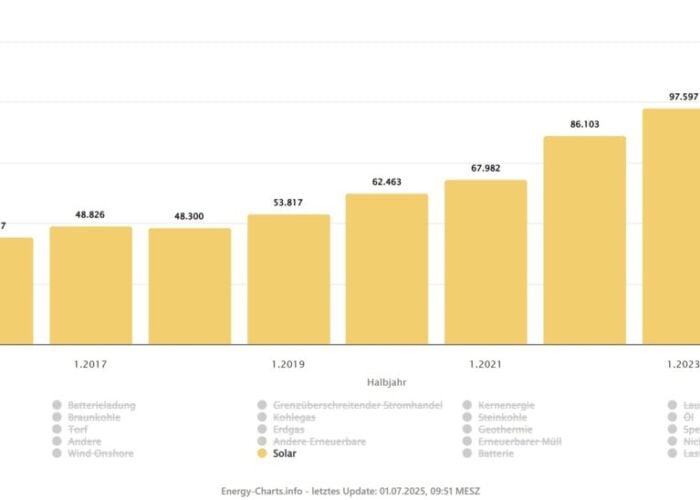
JinkoSolar has recently launched its 2020 flagship utility-scale module series, ‘Tiger PRO’, which includes three new modules, 72 TR, 72 HC and 78 TR versions, with bifacial options. The Tiger PRO series includes the combination of TR (Tiling Ribbon) technology, 9-MBB and half-cut cell technologies, on M10 large-area (182mm x 182mm) p-type monocrystalline wafers, producing average module conversion efficiencies of 21.4%, with up to 580-watt peak with the 78-cell TR module.
Problem
Unlock unlimited access for 12 whole months of distinctive global analysis
Photovoltaics International is now included.
- Regular insight and analysis of the industry’s biggest developments
- In-depth interviews with the industry’s leading figures
- Unlimited digital access to the PV Tech Power journal catalogue
- Unlimited digital access to the Photovoltaics International journal catalogue
- Access to more than 1,000 technical papers
- Discounts on Solar Media’s portfolio of events, in-person and virtual
The global PV market is rapidly moving towards high-performance modules to reduce system costs and initial upfront capital investment, as the drive to lowest LCOE is required in the era of grid parity and post subsidy support. Although solar cell and module conversion efficiencies continue to increase year-on-year, the pace at which grid parity and beyond is tracking has required a shift to increasingly larger wafer sizes and new cell interconnect technologies, to push module power outputs above 500Wp and approaching 600Wp. Multiple large-area wafer sizes coupled to multiple large-area module sizes and weights, due to solar cell counts and choice of dual-glass and glass/transparent backsheets for bifacial modules, has created new challenges in critical component selection decision making. The challenges are compounded by the need for extra attention towards fixed and tracker mounting system selection as well as to compatible PV inverters to fully maximize the ROI.
Solution
The new Tiger PRO module is based on half-cut cell design to reduce cell current mismatch and ribbon power losses. In addition, 9-Busbar and Tiling Ribbon (TR) technology reduces the distance between the main busbar and finger grid lines, which decreases resistance loss and increases power output and efficiency of the module while maintaining a low (Voc) open circuit voltage. The Voc under standard conditions is 49.5V (Double-sided) 530W@STC = 25℃ G=1000W/m2, AM=1.5. The low Voc and temperature coefficient (-0.35%/℃) of the module can increase the number of modules at the unit group string level, and if the DC side capacity of the project is known, the total number of strings in the project can be reduced, which enables power densities of 216W/m2, according to the company. As a result, utility-scale plants can reduce the amount of DC cabling, PV mounting and combiner boxes required, lowering BOS (Balance of System) costs. In the case of the Tiger PRO 72-cell tiling ribbon/transparent backsheet module, the dimensions and weight of the module are said to be smaller than similar large-area modules using similar sized large-area wafers, which reduces single-axis tracker main shaft costs. In addition, as the load area decreases, so do the wind and snow loads, which indirectly reduces the cost of fixtures for the mounting system. Other advantages of the Tiger PRO module series include lower power attenuation rate at 2% for the first year and 0.55% annually thereafter.
Applications
Utility-scale PV power plants.
Platform
The Tiger PRO module series is comprised of two monofacial and two bifacial products in 72-cell (2,230mm x 1,134mm) and 78-cell (2,411mm x 1,134mm) configurations. The (182mm wafer) 72-cell TR half-cut monofacial-PERC module reaches 535Wp performance, while the larger 78-TR version tops out at 580Wp. The Tiger PRO bifacial module in 72-TR form is available with up to 530Wp in dual glass and glass/transparent backsheet configuration, with a lifetime of up to 30 years for the bifacial module with Dupont Tedlar based transparent backsheet, while the 78-TR format achieves 575Wp in a dual glass configuration. An advanced warranty for the Tiger PRO monofacial module includes a first-year degradation of no more than 2%, with degradation of no more than 0.55% in the second through 25th year. The bifacial module has a 30 year linear warranty with the same first-year degradation of no more than 2%, but no more than 0.45% degradation in the second through 30th year.
Availability
Slated to commence mass production in the third quarter of 2020 with over 10GW of planned module manufacturing capacity.
PV Tech will be hosting a 1 hour TechTalk Series webinar with JinkoSolar and technology partners to provide further in-depth support to PV project developers, asset owners and interested parties to increase their understanding of the JinkoSolar Tiger PRO series modules. This comes after a high attendence level, coupled to the number of questions recieved during a recent 30 minute TechTalk Product Series webinar, which can view above and here.
The new webinar details are as follows:
Title: What is the impact of Tiger PRO modules on the LCOE of utility scale projects?
Further details and registration can be found here.







